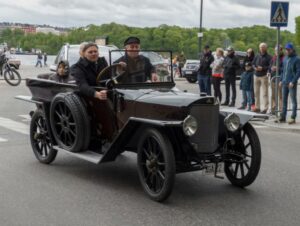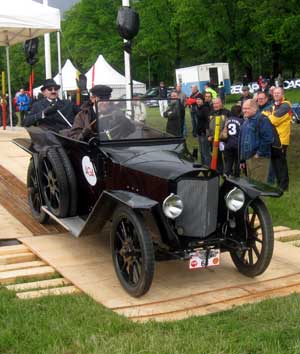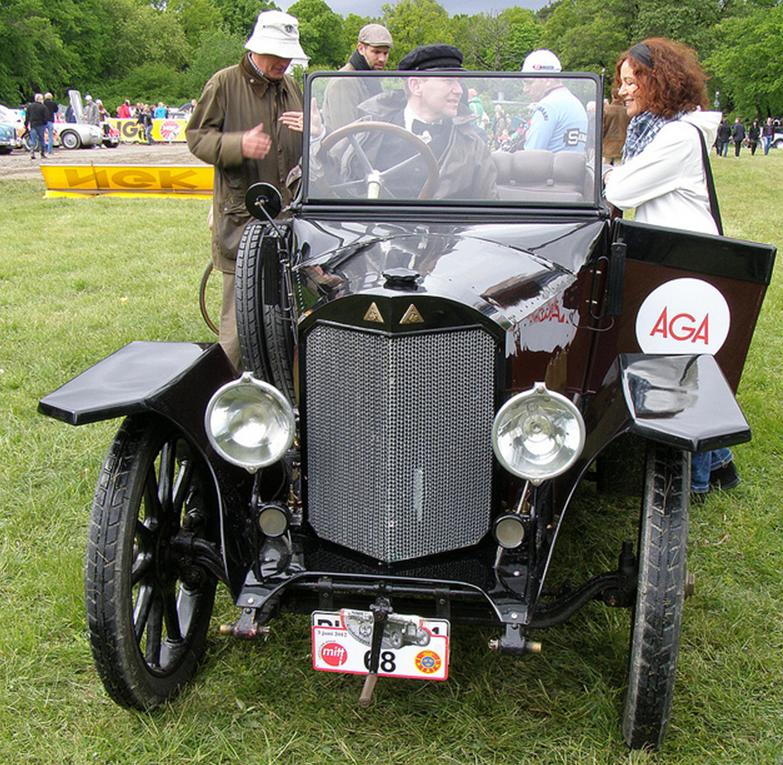The AGA car in Lidingö
Stockholm
I was at AGA in Lidingö, 21-02-2017


AGA in Lidingö

AGA in Lidingö

AGA in Lidingö

The AGA car in Lidingö

myself and the AGA car











































Vertrek naar het Dalèn museum in Zweden





Priscilla BurcherFollow
1922 AGA
Photo taken in Kungsholmstorg at Gärdesloppet, or Prins Bertil Memorial, Stockholm, Sweden.
Driver: Jan-Olof Röttger.
The Aktiengesellschaft für Automobilbau (= corporation for automotive engenineering, abbreviation A.G.A. or AGA) was a German producer of cars in the 1920s in the German capital Berlin.
In 1909 in Berlin an AGA-company was founded as Autogen-Gas-Akkumulator-AG. It was the German filiation of the Swedish company Aktiebolaget Gas-Accumulator (AGA) which still exists in the 21st century since 2000 belonging to the German Linde AG.
The first car, the Typ A of 1919 had a 1418 cc four-cylinder engine driving the rear wheels through a three speed manual transmission. The later Typ C followed in 1921 with the same configuration and engine gave a maximum of 20 PS (15 kW; 20 hp) as well as the later Typ A. This type had in the very beginning 16 PS (12 kW; 16 hp).The car was without much obvious technical ambition, but it was inexpensive for its size and robust, becoming popular especially with small business owners despite its dire brakes. In several cities, including Berlin and Breslau, it was for some time a popular car for use as a taxi. (Wikipedia)
Gärdesloppet, or Prins Bertil Memorial:
Prince Bertil Memorial takes place each year in Stockholm, Sweden, in honour of Prince Bertil, uncle to Sweden’s King Carl XVI Gustaf. The Prince was a race-car driver in the 1930s, using the pseudonym “Monsieur Adrian” to placate his disapproving father, later King Gustaf VI Adolf. Prince Bertil continued to act in the monarchy’s best interests by forgoing marriage to his British girlfriend, Lilian Craig. Under Swedish law, which has since been changed, such a union with a commoner would have rendered him ineligible to serve as regent, should the need have arisen, to Carl Gustaf, son of Prince Bertil’s deceased older brother. The Prince finally married the patient Lilian in 1976, three years after nephew Carl Gustaf was safely on the throne.







Gösta KnochenhauerFollow
1922 AGA Typ A
Taken at Gärdesloppet 2019, Stockholm
The Aktiengesellschaft für Automobilbau (= corporation for automotive engineering, abbreviation A.G.A. or AGA) was a German producer of cars in the 1920s in the German capital of Berlin.
The company was founded as Autogen-Gas-Akkumulator-AG in Berlin in 1909 as the German subsidiary of the Swedish company Aktiebolaget Gasackumulator, since 2000 a part of the German Linde group. During World War I the company produced parts for machine-guns and had a new factory constructed on Herzbergstraße in the suburb of Lichtenberg. The company was rebranded as Aktiengesellschaft für Automobilbau in 1920, but AGA was refounded at the same time so that both gas and automotive versions of the company existed simultaneously. In 1922 AGA became part of Stinnes-trust. AGA continued to be active after 1945 in West Berlin. Those data are based on the commercial register in the Berlin Landesarchiv.
The first car, the Typ A of 1919, had a 1418 cc four-cylinder engine driving the rear wheels through a three-speed manual transmission. The later Typ C followed in 1921 with the same configuration, and its engine gave a maximum of 20 hp (15 kW) as did the Typ A. The Typ C extended the wheelbase from 2,550 mm to 2,780 mm, increased the engine’s power output to 24 hp (18 kW), and even added brakes to all four wheels. Only very few cars of that kind were built. The car was without much obvious technical ambition, but it was robust and inexpensive for its size, becoming popular especially with small business owners despite its dire brakes. In several cities, including Berlin and Breslau, it was for some time a popular car for use as a taxi.
After the death of Hugo Stinnes in 1924, AGA ran into cash flow difficulties, which ended in the company’s bankruptcy at the end of 1925. Stinnes’ son Edmund had been trying to implement a very expensive assembly line production at AGA but never finished the project.
There were also plans for a small 850cc car to be built under license from Singer Motors, and a 45 hp (33 kW) six-cylinder model, but these never reached the production stage. However, production from 1926 was severely curtailed and ended in 1929. By that time between 8,000 and 12,000 AGA cars were produced.
AGA cars featured in a number of races, with notable Willy Loge as one of the drivers. For the 1924 Targa Florio AGA produced a small number of the TF 6/30 PS sports cars featuring a 1490cc engine. AGA won many races and was entered in the 1926 German Grand Prix. Other racers also drove AGA cars.
The Swedish company Thulin made around a hundred AGA cars under license between 1920 and 1924.
Source: Wikipedia







AGA 1922 Bil-och teknikhistoriska samlingarna 2021
vanaf 11-05-2013